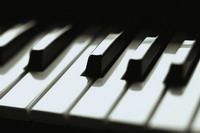Piano Sheets > Allen Toussaint Sheet Music > Java (ver. 1) Piano Sheet
Java (ver. 1) by Allen Toussaint - Piano Sheets and Free Sheet Music

About the Song
"Java", a song by Allen Toussaint which became a hit single by Al Hirt Allen Toussaint, IPA: [ˈtuËseɪnt], (born January 14, 1938) is an American musician, composer and record producer.
One of the most influential figures in New Orleans R&B, many of Toussaint's songs have become familiar through their numerous cover versions of popular songs, including "Working in the Coalmine", "Ride Your Pony", "Fortune Teller", "Brickyard Blues", "Get Out Of My Life Woman", "Southern Nights," "Everything I Do Gonna Be Funky", "I'll Take a Melody" and "Mother-in-Law."
Toussaint grew up in a shotgun house in the New Orleans neighborhood of Gert Town, where his mother welcomed and fed all manner of musicians as they practiced and recorded with her son, Allen Toussaint. After a lucky break at age 17 in which he stood in for Huey Smith at a performance with Earl King's band in Pritchard, Alabama, Toussaint.
Download this sheet!
About the Artist

Random article
The joy of reading piano notes Music is said to be the best medicine developed by nature. The thought and feel is said to have the power to bring back the dead. While playing music gives you the joy you just cannot contain, same is the case with reading piano music sheets. After all, it is sheet music which tells you exactly how to play that favorite tune of yours.
Many feel that reading piano music sheets is an ardent task. Well, this is exactly where are all wrong. It is certainly not the case that one glance and you will understand what is written in that sheet music. But it is certainly not as difficult as expected! Sheet Music is the language of expressing music in a readable form. And just like to learn a new language you need dedication and perseverance, same is the case with (More...)
